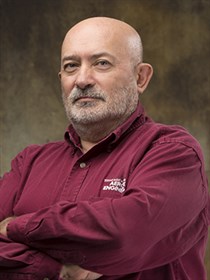 Dr. Daniele Mortari, professor in the Department of Aerospace Engineering at Texas A&M University, has been invited to deliver a plenary lecture at the 57th Israel Annual Conference on Aerospace Sciences March 15-16, in Tel Aviv and Haifa, Israel. The conference covers all areas of aerospace sciences, attracting about 500 participants from academia and industry.
Dr. Daniele Mortari, professor in the Department of Aerospace Engineering at Texas A&M University, has been invited to deliver a plenary lecture at the 57th Israel Annual Conference on Aerospace Sciences March 15-16, in Tel Aviv and Haifa, Israel. The conference covers all areas of aerospace sciences, attracting about 500 participants from academia and industry.
Mortari will speak on “From Art to Science: The Satellite Constellation Evolution.” He will focus his talk on the recent approaches to design satellite constellations complete with animations.
The flower constellations theory evolution began with Luigi Broglio’s “Sistem Quadrifoglio,” a four-satellite configuration to study how the upper part of the atmosphere — the troposphere — is affected by solar activity.
In 2003, Mortari generalized some properties of this constellation and created the original theory of Flower Constellations. This new way to design satellite constellations has generated interesting subsets such as the shape-preserving constellations, the rock around orbits and the two-way orbits.
Because of number theory mathematical properties, the theory has been generalized to the 2-D and 3-D Lattice versions, and finally to the Necklace problem. The mathematics behind the design process uses number theory relationship.
Unexpected, untapped and unexplored constellations can be created not only to improve the existing applications — communications, observation and GPS — but also for potential current and futuristic applications. The art of designing orbits, satellite constellations and formations will have a large impact on the future space mission architectures and concepts.
Mortari works in the field of attitude and position estimation, satellite constellation design and sensor data processing. In addition, he has taught in the School of Aerospace Engineering at the University of Rome, and in electronic engineering at the University of Perugia.
He received his doctorate in nuclear engineering from the University of Rome “La Sapienza” in 1981. He is an Institute of Electrical and Electronics Engineers (IEEE) and Amerian Astronautical Society (AAS) Fellow, AIAA Associate Fellow, Honorary Member of IEEE-AESS Space System Technical Panel and former IEEE Distinguished Speaker.
He has published approximately 300 papers, and has been widely recognized for his work, including receiving a best paper award from AAS/AIAA, two NASA’s Group Achievement Awards, a 2003 Spacecraft Technology Center Award, the prestigious 2007 IEEE Judith A. Resnik Award and the 2016 AAS Dirk Brouwer Award.